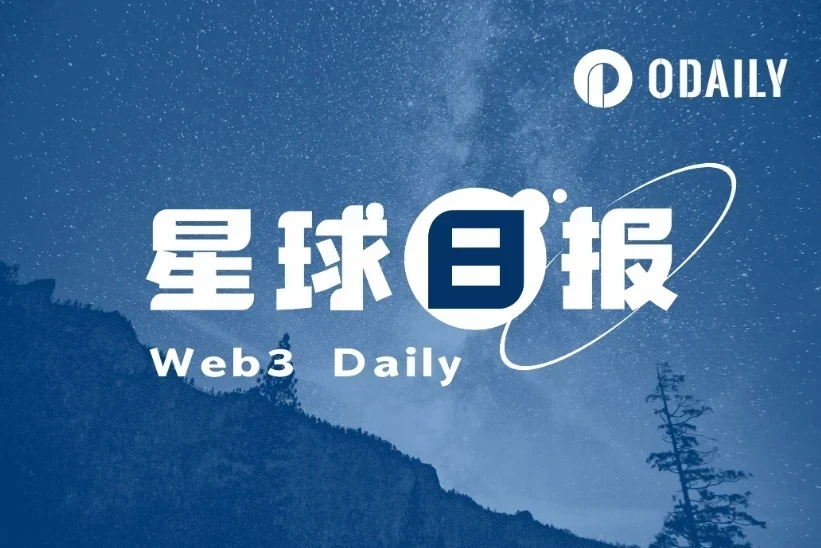
Headlines
The top five Bitcoin miners are not selling Bitcoin due to the halving
Bitcoin halving is imminent, but the top five Bitcoin miners are not selling Bitcoin. According to a report by Bitwise on April 10, the total amount of Bitcoin sold by the top five mining companies fell to about 2,000 in the first quarter of 2024, reaching the lowest level in two years.
Currently, Bitcoin miners around the world hold more than 700,000 Bitcoins, accounting for 3.4% of the total Bitcoin supply. The last time the top five mining companies sold less than 2,000 Bitcoins was in the first quarter of 2022. In contrast, in the fourth quarter of 2023, the top five mining companies sold a total of more than 7,000 Bitcoins.
Among the top five mining companies, Marathon Digital produced the most Bitcoin, with a cost price of $22,249 per coin. It produced more than 2,500 Bitcoins in the first quarter of 2024, but this figure was lower than the more than 4,000 Bitcoins in the fourth quarter of 2023.
WorldCoin announced the launch of the second-layer network World Chain, which is expected to go online later this summer, aiming to build a financial and identity network. It is reported that Worldchain is an OP Stack chain that will focus on scalability, and the near-term goal is to significantly increase the Gas limit of Layer 2 blocks.
Gemini Trust Releases Update on Earn Plans: At a hearing on April 16, the bankruptcy court verbally approved a global settlement agreement between Gemini, Genesis, and other creditors in the Genesis bankruptcy case. This is another milestone in the process of achieving full recovery of Earn users’ digital assets.
The settlement agreement provides that the initial distribution amount to Earn users will be approximately 97% of the digital assets owed to users as of the suspension date (November 16, 2022), and the initial distribution is expected to be made in late May or early June. The remaining distribution amount will be recovered from Digital Currency Group, Inc. (DCG).
Industry News
CoinGecko released the 2024 Q1 cryptocurrency industry report. The key points are as follows:
The total market value of cryptocurrencies continued to grow by 65% in Q1, reaching a high of $2.9 trillion in March;
Driven by the approval of the US spot Bitcoin ETF, the price of Bitcoin soared 69% in Q1, with an average daily trading volume of US$34.1 billion, a 90% increase from Q4 2023;
As of April 2, the AUM of US spot Bitcoin ETFs reached $55.1 billion;
CEX spot trading volume reached $4.29 trillion, the highest quarterly trading volume among the top ten spot CEXs since December 2021; as of March 2024, Binances market share is 50%;
The scale of Ethereum re-staking on EigenLayer increased by 36%; the total market value of Meme coins on the top ten Solana chains increased by 802% to US$9.36 billion;
NFT transaction volume reached $4.7 billion️, of which Blur accounted for 28%;
The share of DEX transactions on the Ethereum chain fell below 40%, and in February, the indicator fell to an all-time low of 30%.
A recent analysis by cryptocurrency exchange Bybit suggests that if demand for BTC remains at current levels, exchanges could face a shortage of BTC by the end of 2024.
The report predicts that if the current withdrawal rate continues (currently around 7,000 BTC per day), exchanges’ BTC reserves could be completely depleted within the next nine months. The shortage forecast is closely tied to the halving event expected in 2024.
“The rapid depletion of Bitcoin reserves is preparing the market for a possible liquidity crisis,” said Alex Greene, senior analyst at Blockchain Insights. “As reserves decrease, the market’s ability to absorb large sell orders without affecting prices decreases.”
According to a report by Bybit, institutional investors have significantly increased their BTC investments following the recent approval of spot Bitcoin ETFs by U.S. regulators, driving up demand amid shrinking supply.
Investment banking giant Goldman Sachs warned its clients in a report not to over-interpret Bitcoins historical halving cycles. The report stated: Historically, the first three halvings were accompanied by an increase in Bitcoin prices, although the time required to reach historical highs varied greatly. Extrapolation of past cycles and the impact of halvings should be treated with caution given the respective current macroeconomic environments.
According to Goldman Sachs, the Bitcoin halving is a “psychological reminder to investors that Bitcoin’s supply is constrained,” while the medium-term outlook depends on inflows into spot ETFs.
“The halving will have less impact on Bitcoin’s medium-term outlook, as Bitcoin’s price performance will likely continue to be driven by the aforementioned supply-demand dynamics and continued demand for a Bitcoin ETF, coupled with the self-reflective nature of crypto markets being the primary determinant of spot price action,” the team wrote.
CryptoQuant posted on the X platform that BTC exchange withdrawals have reached their highest level since January 2023, indicating that BTC has entered an important accumulation phase. In addition, recent data shows that prices are likely to rise after the market cools down (BTC fell 10% last week).
Analysts noted that open interest in BTC contracts on derivatives exchanges fell from $18 billion to $14.2 billion, indicating a reduction in leveraged trading. This came after a period of high trading activity and could mean that the market is stabilizing for the time being.
JPMorgan Chase said the recent weak performance of listed Bitcoin mining companies provides an attractive entry point for investors. The bank released a report showing that the total market value of 14 U.S.-listed Bitcoin mining companies it tracks fell 28% to $14.2 billion from March 31 to April 15. All stocks performed poorly, all fell at least 20%. Bitcoin has risen 43% this year and 130% in the past six months, as the typical post-halving rally seems to have been pulled ahead of time.
Project News
Jupiter announces launch of LST token JupSOL to improve user trading experience
Jupiter announced the launch of the LST token JupSOL in an article on the X platform. The validator node charges no fees and provides 100% MEV cashback. It is currently entrusting an additional 100,000 SOL to increase the yield of JupSOL. This may make JupSOL the highest-yielding LST in the Solana ecosystem. The more SOLs that participate in staking, the more transactions Jupiter can send and the fewer transactions affected by network congestion.
Merlin Chain has opened the Merlins Seal points corresponding airdrop query page
Merlin Chain announced on the X platform that the airdrop query page corresponding to Merlins Seal points is now open, and users can provide feedback on related issues within 24 hours.
BTC L2 project B² Network announces the official launch of the mainnet
BTC Layer 2 project B² Network announced that the mainnet is officially launched. Currently, users can use the official bridge and meson.fi to bridge assets into B² Network. Ecosystem projects and assets will gradually deploy the mainnet, and Buzz activity asset extraction and mining activities will begin one after another.
Previously, B² Network has announced the official launch of the mainnet activity, and users who participate can receive multiple airdrop rewards from B² Network and ecological projects.
ByteDance company BytePlus has partnered with Mysten Labs to adapt its recommendation solutions and augmented reality products to the Sui ecosystem.
BytePlus supports Sui’s developers with services such as content distribution, personalization, and AR technology, facilitating the development of applications with global impact.
Omni Network is now open for airdrops and staking
According to official news, Ethereum interoperability protocol Omni Network has opened airdrop applications and staking, and Binance platform trading will start at 8 am Eastern Time.










